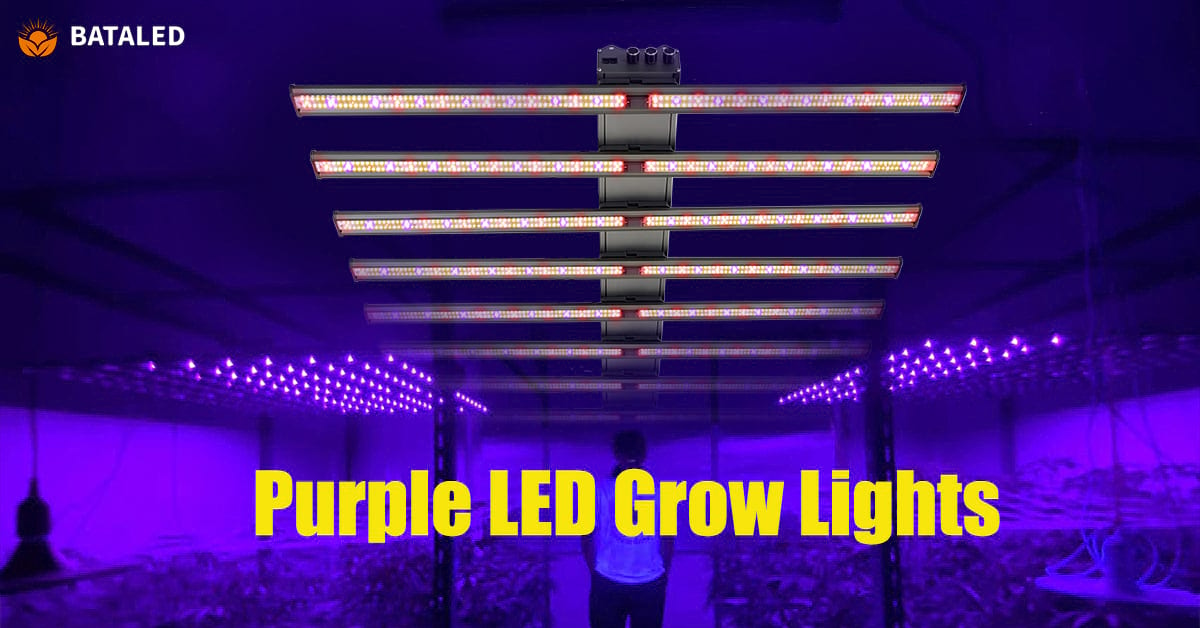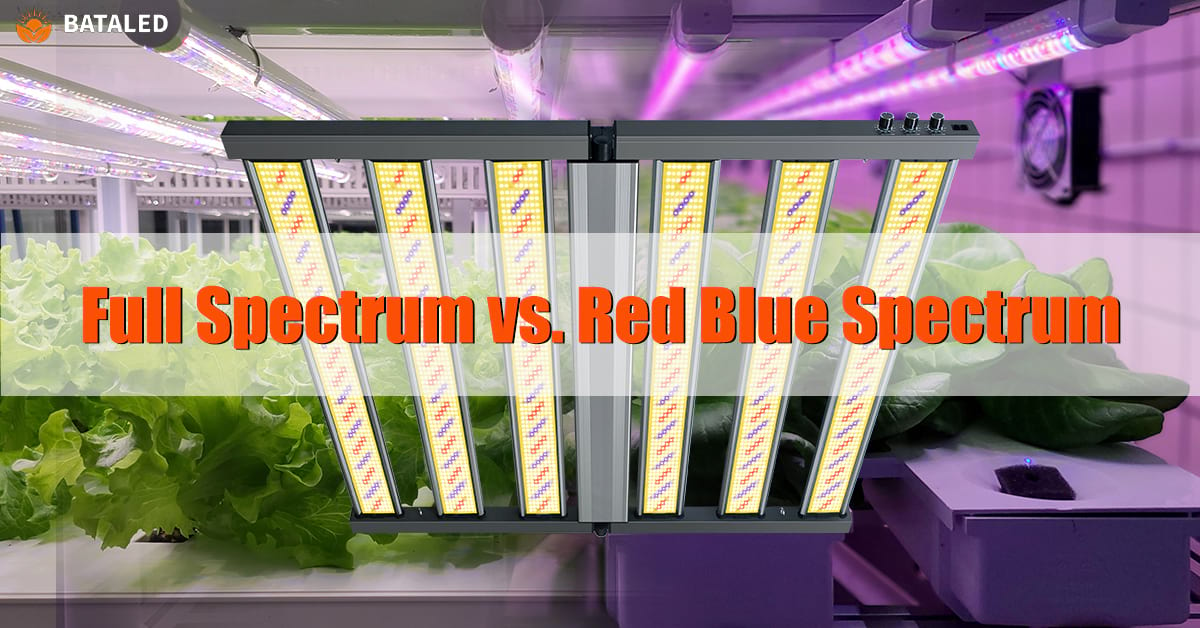Growing Perfect Lettuce Indoors: Complete LED Grow Lights Cultivation Guide from Seed to Harvest
Lettuce has become one of the most popular leafy greens for indoor cultivation due to its short growth cycle, delicious taste, rich vitamin content, and easy maintenance. This makes it equally attractive to both commercial growers and home gardeners. With the rising popularity of indoor farming, understanding how to grow lettuce efficiently and sustainably is crucial.
In this article, I’ll share our experience using LED grow lights to optimize indoor lettuce production, along with step-by-step cultivation tips from seedling to harvest.
Why Grow Lettuce Indoors?
Indoor lettuce farming is no longer a sci-fi fantasy—it’s a practical solution for modern urban agriculture. Compared to traditional outdoor growing, the biggest advantage of indoor cultivation is complete environmental control. Whether it’s freezing winter or scorching summer, you can create ideal conditions for lettuce year-round, free from seasonal limitations.
Moreover, indoor growing eliminates common outdoor pest problems, reducing pesticide use and ensuring truly organic, healthy produce. For modern consumers who value quality of life, this isn’t just a new growing method—it’s a sustainable lifestyle. Next, we’ll focus on how to use LED grow lights to create the perfect lighting environment for lettuce.
Light Requirements for Indoor Lettuce
Light is the most critical factor in indoor lettuce cultivation, just as sunlight is for outdoor crops. Without proper lighting, even the best varieties and nutrients won’t produce tender, juicy lettuce. LED technology allows growers to precisely control light spectrum, intensity, and photoperiod, mimicking—or even improving upon—natural sunlight. Understanding how lettuce’s light needs change across growth stages is Lesson #1 for success.
Spectrum Selection: Full Spectrum vs. Red/Blue?
Full Spectrum LED Grow Lights
With countless brands and light types on the market, choosing can be overwhelming. But here’s the truth: full-spectrum LEDs are the safest, most versatile option. They closely resemble natural sunlight, providing all wavelengths plants need—from blue/violet to red/orange, plus invisible UV and far-red light.
Full-spectrum LEDs are ideal for growers prioritizing natural lettuce flavor, promoting balanced development with thick leaves and robust taste. Research shows lettuce grown under full-spectrum light contains 15–20% more vitamin C than red/blue-only setups.
Red/Blue Spectrum LEDs
Red/blue combo LEDs (typically at a 5:1 ratio) are a budget-friendly choice for hydroponic enthusiasts. These lights emphasize the wavelengths most critical for photosynthesis—red (640–660nm) and blue (430–460nm)—while consuming less energy and generating minimal heat.
Data from Produce Grower magazine shows lettuce under red/blue light grows 10–15% faster, making it ideal for commercial growers chasing quick turnarounds. However, long-term use may result in thinner leaves and milder flavor.
Smart Tunable Spectrum Systems
For perfectionists, smart LED systems with adjustable spectrum and intensity are the professional choice. These lights let you dynamically tweak wavelengths for each growth phase:
-
Seedling stage: More blue light for compact growth
-
Vegetative stage: Balanced red/blue for acceleration
-
Maturity stage: Extra red to enhance yield
-
Pre-harvest: A dash of UV-A to boost flavor compounds
Greenhouse Mag trials found dynamic systems increase yields by 30% compared to fixed-spectrum lights. Though pricier upfront, their long-term efficiency pays off.
Light Intensity & DLI: Precision Adjustments from Seedling to Harvest
PPFD (Photosynthetic Photon Flux Density)
Measured in μmol/m²/s, PPFD indicates light intensity. Lettuce’s needs vary dramatically by stage, with a light saturation point around 600 μmol/m²/s—exceeding this wastes energy and may cause light stress.
| Growth Stage | Ideal PPFD |
|---|---|
| Seedling | 150–200 μmol/m²/s |
| Vegetative | 250–350 μmol/m²/s |
| Maturity | 400 μmol/m²/s |
DLI (Daily Light Integral)
DLI measures total daily photons (mol/m²/day). For lettuce, 14–17 DLI is ideal. Calculate it as:
DLI = PPFD × Light Hours × 3600 ÷ 1,000,000
Example: 300 μmol/m²/s for 16 hours = 17.28 DLI (perfect). In winter, extend light duration to compensate for weaker intensity.
Photoperiod: Managing Lettuce’s “Biological Clock”
Lettuce is a long-day plant but responds mainly to total light exposure rather than strict photoperiods. Aim for 14–16 hours of light daily, allowing 8–10 hours of darkness for respiration and nutrient transport.
⚠️ Warning: 24-hour lighting may speed growth but raises nitrate levels, causing bitterness. Adjust photoperiods by stage:
| Stage | Light Hours | Purpose |
|---|---|---|
| Seedling | 12–14 | Prevents legginess |
| Vegetative | 14–16 | Maximizes growth |
| Pre-harvest | 10–12 | Slows metabolism, extends shelf life |
Pro Tip: Use timers—irregular light cycles stress plants, triggering premature bolting.
Choosing the Right Grow Light for Lettuce
With endless options on the market, beginners often feel lost. The right light balances budget, space, and yield goals while optimizing flavor and quality.
Grow Light Types Compared
1. LED Grow Lights
-
Best for: Energy efficiency and customizable spectra
-
Ideal spectrum: Full visible range (extra blue for growth, red for leaf expansion)
-
Pros: Long lifespan, minimal heat, 50,000–100,000 hours
-
Cost: $100–500 upfront; $36–73/year in electricity
2. Fluorescent Lights (T5/T8)
-
Best for: Small-scale or beginner setups
-
Pros: Affordable ($20–100), low heat, balanced spectrum
-
Cons: Lower efficiency; replace bulbs every 2–3 years
3. Metal Halide (MH)
-
Best for: Seedling phase (blue-heavy spectrum)
-
Drawbacks: High heat, 1–2 year bulb life, energy-intensive
4. High-Pressure Sodium (HPS)
-
Best for: Mixed crops (not ideal for lettuce alone)
-
Pros: Cheap upfront
-
Cons: High heat, requires supplemental blue light
Verdict: LEDs win for full-cycle lettuce growing.
Hands-On Growing Tips: Seed to Harvest
Seedling Stage: Building Strong Foundations
-
Containers: 72-cell trays boost survival rates by 95% vs. direct sowing.
-
Medium: Coconut coir + perlite (3:1) retains moisture and oxygen.
-
Light: 100–150 μmol/m²/s, 12 hours/day. Extra blue light prevents stretching.
Vegetative Stage: Speeding Up Leaf Growth
-
Light: 250–350 μmol/m²/s, 14–16 hours/day (7:1 red:blue ratio).
-
Temp: 18–22°C daytime; avoid >25°C to prevent bolting.
-
Watering: Let soil dry slightly between waterings.
Maturity & Harvest
-
Light Tricks: Add 10% UV-A before harvest to boost antioxidants.
-
Harvesting: “Cut-and-come-again” extends yields for 6–8 weeks.
-
Storage: Hydrocool (ice bath) immediately, then refrigerate at 0–5°C.
Pro Tips for Higher Yields & Better Flavor
-
Vertical Farming: 4-tier NFT systems yield 50kg/m²/year.
-
Light Tweaks: Far-red (730nm) increases sweetness by 1–2°Brix.
-
Reflective Walls: Boost PPFD by 30% with mirrored panels.
Troubleshooting Common Issues
-
Yellow Leaves? Likely nitrogen/iron deficiency.
-
Leggy Plants? More blue light + lower temps.
-
Bitter Taste? Avoid 24-hour lighting; harvest before bolting.
Conclusion
By mastering LED spectrum control, staged PPFD adjustments, and environmental precision, you can grow lettuce efficiently indoors—whether for home or commercial production. Now, it’s time to put theory into practice and enjoy fresh, crisp lettuce year-round!
CATEGORIES
Recommended Post

Where It’s Legal to Grow Cannabis: Ultimate Tips & Cultivation Laws
About Author—Jose Li
Jose, a senior content creator at BATA LED, brings over 5 years of expertise in LED grow light. He delivers valuable insights to help growers and farmers better understand LED grow light technology, empowering them to boost crop yields and quality with advanced lighting solutions.


